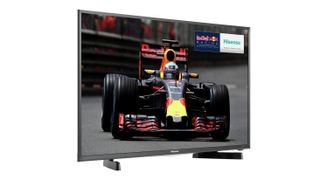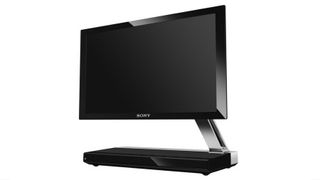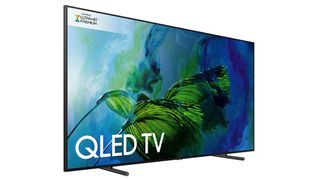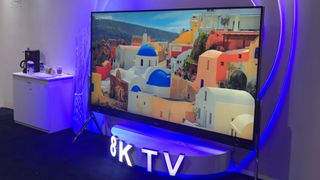[ad_1]
After years of television innovations that either had little to offer the average consumer (3D…urgh) or introduced more problems than they solved (curved TVs anyone?), 2017 saw manufacturers get back to focussing on making great looking sets.
It helps that there’s a whole host of new technologies out there that needs new hardware to take advantage of it. From 4K, to HDR (of which there are now a couple of competing standards including Dolby Vision and HDR10+), 10-bit color depth and wide color gamut, there are a dizzying array of different specifications that TV manufacturers have been adopting to certain extents over the course of the year.
2017 was also the year when almost every manufacturer (barring Samsung, unsurprisingly) embraced OLED as their panel type of choice for their high-end sets. All of these OLED panels are still made by LG Display, but the fact that you can now choose between having your TV be powered by Sony’s X1 processor or Philips’ P5, is never going to be a bad thing.
But there’s still so much progress to be made. Tech needs to trickle down to low-end sets, and there’s even room for the flagship sets to improve with brighter displays and more color depth.
So read on for what we want to see from TV tech in 2018.
More love for the low-end
We love big expensive TVs. It’s amazing seeing the cutting edge of television technology, whethers it’s the insane thinness of a TV like the LG OLED W7, or the screen-as-a-speaker design of the Sony Bravia A1E.
But the fact is that most people are constrained to TVs that are a) cheaper and b) smaller. We’d all love to have a dedicated home cinema room in our homes, but short of a lottery win it’s unlikely to happen anytime soon.
So it’s disappointing that many of the amazing features that have graced high-end TVs have so far not made their way to cheaper, smaller sets.

Take HDR. While each manufacturers flagship products are happily hitting the 1000-nit maximum that’s mandated for the ‘Premium UHD’ spec, most mid-range TVs are lucky if they get even halfway there.
So too are 10-bit panels depressingly rare below the flagship level.
We get that manufacturers have to save some features for their high-end sets (or else, why would they be worth more money), but it’s time for the next generation of TV tech to make it to the mainstream.
This time next year I don’t want to see any mention of the pseudo-HDR terms that have started to appear in TV manufacturers catalogues. That means no ‘HDR Pro’, ‘HDR+’ or ‘HDR Certified’. HDR10 or bust.
Better TVs for gaming
Every piece of technology involves trade-offs, and TVs are no different. Want thinner sets? Then you’re going to have to put up with weaker sound. Direct backlighting? That’ll require a thicker television.
But one area that’s particularly frustrating is input lag, which increases massively with all of the modern picture processing technology that goes into modern TVs.
To their credit, most televisions now include a ‘game mode’ setting where you can disable this lag-inducing processing, but doing so can often make the image quality substantially worse with more picture noise and artifacting.
In 2018 we’d love to see a better compromise, especially since the HDMI 2.1 standard (which includes gamer-pleasing adaptive sync technology) has been standardised far too late to hit 2018’s televisions.
And while we’re at it, it would be great to see a solution that allows game mode to turn on and off automatically depending on whether you’re using the Xbox One X as a media-player or a games console.

Needing to use ‘game mode’ means having to make compromises with your expensive 4K console
OLEDs for all
While Samsung is making a song and dance about its Quantum Dot-powered QLED displays, for our money the best images are still provided by OLEDs, which are able to go far darker than competing LCD-based technologies.
The only thing stopping OLEDs from crushing every other display type in its wake is its obscene cost. Yields from these panels remain frustratingly low, meaning that their prices have to take into account the amount of panels a manufacturer has to produce before getting one right.
OLEDs aren’t going to get cheaper overnight, but we’d like to see them available in more sizes. In 2017 they were available in 55, 65 and 75-inch varients, but in 2018 we’d love to see them shrink as small as 49 or even 40 inches.
We get it, people who don’t have the space for a 55-inch TV probably don’t have the budget for an expensive OLED set, but as technology journalists crammed into tiny inner-city apartments it can be tough putting up with the limited technology available in today’s smaller screens.

OLED TVs haven’t always been huge. Sony’s first (announced at CES 2007) was just 11-inches big.
Brighter panels
While the mid-range and low-end plays catch-up, there’s plenty for flagship sets to do to forge ahead with exciting new technologies.
Chief amongst them is brightness. The Ultra HD Premium spec mandates that HDR screens should be able to hit a maximum brightness of 1000 nits, but already televisions like Samsung’s Q9F are upping the anti with sets that go as bright as 1500 nits.
In 2018, expect sets to go even brighter. In their Dolby Vision white paper, the audio visual specialists said that a range of 0 to 10,000 nits would satisfy 90% of viewers.

The Samsung Q9F is one of the brightest TVs around, but sets are sure to get brighter still
Let that sink in for a moment. Most TVs would have to get ten times brighter to make the most of the Dolby Vision standard, and even then there’ll still be one asshole in every ten than wants things brighter still.
Brighter sets sounds extravagant, but this is the best way to get images that have vibrancy and life to them. Colors will look more naturally saturated, and highlights will really sparkle.
So bring on our next generation of retina-searing televisions!
12-bits of color goodness
With increasing brightness comes an increased need for color bit depth.
Everyone’s experienced ‘color banding’, that phenomenon where you can see an abrupt shift in color rather than a gradual transition. Look at a heavily compressed jpeg image to see what we’re talking about.
As sets get brighter, color banding becomes more of a problem, and so as we start to approach the brightness limits of Dolby Vision, the need to move to 12-bit panels becomes even more pronounced.
Thankfully, the Dolby Vision standard is already designed for 12-bit displays, it’s just that unfortunately there aren’t any televisions out there today that are built with 12-bit capable panels.
Even LG’s Dolby Vision-supporting high-end OLEDs don’t currently utilise 12-bit panels.
This moment is unlikely to come in 2018, but we’d still like to see manufacturers move closer to getting the most out of Dolby Vision.

New displays-types entirely?
LCDs are fine, and OLEDs are great, but could 2018 be the year we finally get to see a third display type enter the arena? The folks over at CNET have a couple of ideas for the TV tech we could see at CES in January.
First up is Micro LED. Current LED TVs use LEDs in combination with an LCD panel to produce an image. The LEDs contribute the backlight, while the LCD panel creates the individually colored pixels that create the image you see.
What Micro LED does is have these LEDs create both the backlight and the individual pixels, leading to the same per-pixel brightness control that makes OLED TVs so amazing.
It’s a similar story when it comes to their second choice, ‘emissive quantum dots’. Unlike current Quantum Dot displays, which rely on a backlight to produce color, a new generation of Quantum Dot displays could ditch the backlight entirely which, again, has lead to hopes that they could produce an OLED-like experience.
Before you get too excited, it’s unlikely that we’ll see these TVs appear for sale in 2018, but there are some hopes that we might see the technology being demonstrated as a proof of concept, before sets become available in the coming years.
Honorable mention: 8K TVs
Whenever the topic of 4K televisions is brought up in the TechRadar offices, there’s always someone who claims that they’re just a stepping stone towards 8K displays.
Yes, there will probably be more 8K displays available in 2018, but don’t think for one second that you need to hold out for them to become affordable before you buy your next television.
Here’s the thing. Even 4K (which, let us remember, has just a quarter of the pixels of 8K) is only really visible on TVs that are 68-inches big (assuming you’re sitting five feet away), and 8K TVs are going to need to be an order of magnitude bigger than that to be worthwhile.

But 4K TVs are worthwhile because of the host of other technologies they’ve brought along for the ride. A 55-inch 4K TV doesn’t look better than a 55-inch HD TV because of the amount of pixels it’s packing, it looks better because of its HDR, wide color gamut, and 10-bits of color depth.
When you hit 4K’s worth of pixels, diminishing returns starts to set in, and the film and TV industry know this. Most 4K content available today is upressed 2K content, and with a few exceptions (such as the reference grade Planet Earth 2), we’d be hard-pressed to tell the difference.
Maybe one day 8K TVs will hit the mainstream, but you’ll only be able to see the difference if they bring a host of other technologies along for the ride. For now though, 4K is here to stay.
- These are the best TVs available right now
[ad_2]
Source link
